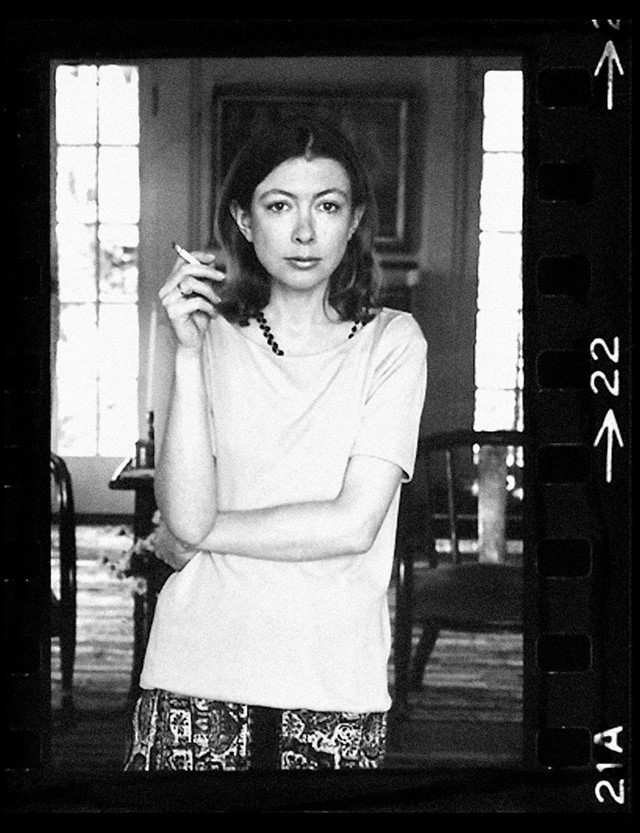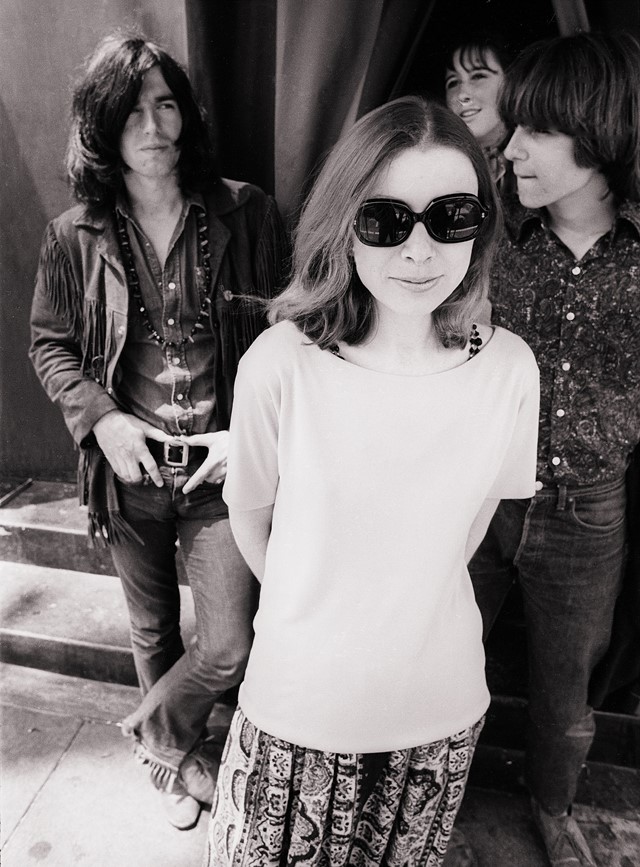As a new documentary about the literary legend arrives on Netflix, we consider five ways to channel her strength, style and candour
Journalist, novelist and screenwriter Joan Didion has long been turned to for her therapeutic wisdom, spare prose and clarity of thought. At the tender age of five, Didion took to pen and paper in a bid to evaluate her world; the tiny girl jotted down the scraps of dialogue she gleaned from adults around her, and has since turned her insatiable analytical skills to all manner of topics. Whether American politics, grief, murder trials, migraines, self-respect (one of several articles written at her first job at US Vogue), writing itself, film scripts or the grimy glamour of her often California-set novels, each subject is broached with her self-assured and methodical manner.
It’s with her non-fictional essays, compilations like The White Album and Slouching Towards Bethlehem, that she rose to literary fame, but Didion’s elegant and reserved dress sense – numerous odes have been written to her silk jersey dresses, boxy shifts, loose un-styled hair, oversized T-shirts and sunglasses, bare skin, fresh flowers worn in her hair – have served to seal her clear-cut individuality. As The Center Will not Hold lands on Netflix today – the first documentary about her life, produced by her nephew (actor Griffin Dunne) – we take a look at a few ways in which we can be a little more like Joan...

1. Pack your suitcase in style
There’s little that’s pleasing about packing for a trip, but Joan Didion’s minimalist yet impossibly chic packing list is. The writer turned to this inventory, taped to the inside of her closet door, for every assignment trip she took, and the simplicity and strength of character it displays paints a succinct picture of her attitude to style. There’s an almost monastic approach to her survival kit, and leotards (anonymous separates to slip beneath skirts and pullovers), bourbon and Basis soap occupy equal space on her concise checklist. Her cataloguing pushes her oft-admired style to the realm of the incidental, which serves only to render her look even more stylish. Even the very compilation of this list comes under Didion’s own scrutiny, as her own disclaimer clarifies: “It should be clear that this was a list made by someone who prized control, yearned after momentum, someone determined to play her role as if she had the script, heard her cues, knew the narrative.” Both list and accompanying analysis sum up the writer’s attitude to dressing: that such details tell a story, build a character and play a role, and with Didion’s perfect prose, it’s only natural that the results be understatedly beautiful.

2. Style is ageless
In 2015, Joan Didion’s genius was announced to all and any who may have been unaware of her existence when Phoebe Philo enrolled the writer to star in her Spring/Summer campaign. Wearing a simple ribbed roll-neck, her ubiquitous oversized black shades and a gobstopper gold pendant, the then 80-year-old posed for the image in her own apartment, accompanied by only Philo and photographer Juergen Teller. The campaign came as a surprise not only to the fashion industry – many of whom would have been long-term fans but would have scarcely seen her in the spotlight for decades – but also to her own family. Griffin Dunne, the documentary producer, explained that the first time he caught wind of the project was at the same time as everyone else – when it hit the internet. Dunne was swiftly inundated with calls from family, revealing that Didion had kept the plan entirely to herself. The collaboration was almost universally received – even by fashion cynics – as a sweet-spot combination of two female intellectual heavyweights. The lesson to learn? Brilliance lies at the corner where talent meets the unexpected.
3. Writing as therapy
“I write entirely to find out what I’m thinking, what I’m looking at, what I see and what it means. What I want and what I fear,” explained Didion at a Regents’ Lecture she gave in 1976 at the University of California at Berkeley. The lecture was entitled Why I Write. This very statement is testament to its own truth: that Joan Didion uses writing to understand absolutely everything, even her own desire to write. Every inch of Didion’s prose is propelled by this cool, thorough and seemingly exhaustive analysis of the facts at hand, whether she’s assessing the science of her own migraine symptoms (her essay In Bed from The White Album) or charting the fluctuating states in which she processed the devastating losses of both her husband John (in her book The Year of Magical Thinking) and later, their daughter Quintana (Blue Nights). The result of this unflinching scrutiny is as useful to the reader as it is to Didion: in looking a topic so square in the eye, one experiences a sense of liberation, shadows obliterated by light.

4. The secret to a happy marriage
Didion married writer Dunne at the age of 30 and the couple moved to Hollywood from New York City shortly after. The couple set out to make their name writing screenplays together in Los Angeles (their first was The Panic in Needle Park, Al Pacino’s acting debut); these two great minds worked quickly and methodically together, simultaneously working on their own novels and journalism independently. Their 40-year marriage saw them inextricably entwined, finishing each other’s sentences at parties. They were “terrifically, terribly dependent on one another,” she once said. Their ability to glide between professional and personal collaboration is owed in no small part to their shared pragmatism, as Didion wrote in The Year of Magical Thinking, “I did not always think he was right nor did he always think I was right, but we were each the person the other trusted”.
As with any subject, Didion put their marriage under the microscope too. For her first article for Time magazine, Sojourns, Didion wrote, “We are here on this island in the middle of the Pacific in lieu of filing for divorce… I tell you this not as aimless revelation but because I want you to know, as you read me, precisely who I am and where I am and what is on my mind.” Such a confrontational admission displayed Didion’s confidence, in her own mind and her marriage. For her, good and bad are irrelevant when you have a sturdy grasp on the facts.

5. Be good company
Didion and Dunne were fabulous hosts. The parties they threw in their Hollywood home boasted eclectic guest lists of writers, musicians and homicide detectives. Janis Joplin, Steven Spielberg, Roman Polanski and Warren Beatty were regulars, the latter having had a long-term crush on Didion, who’d rebuffed him more than once.
As with her talent at costume, Didion knew how to set a scene. In her book The Year of Magical Thinking, the writer remembers the reception she threw for her daughter’s wedding: the pink lemonade, frangipani leis, petals scattered in the pool and Quintana’s braided hair – the barefoot ease of it all painting a picture of perfect, happy ease. It wasn’t just in her writing that Didion could craft such mise en scène, as a 1987 article for The New York Times corroborated, describing her presence at a West Hollywood gallery launch. “Didion sits at a table quietly. She is peaceful. An endless stream of people comes to her, bending down to kiss her. She asks after their children, remembering personal details about everyone. Anjelica Huston, all legs in a little black dress, Teri Garr, George Stevens Jr., Tony Richardson, Michelle Phillips, Jean Vanderbilt and George Segal come to pay respects to the tiny woman with a gardenia in her hair.” Proof if any that an inquisitive sensibility makes for addictive company.
The Center Will Not Hold launches on Netflix on Friday October 27, 2017.
